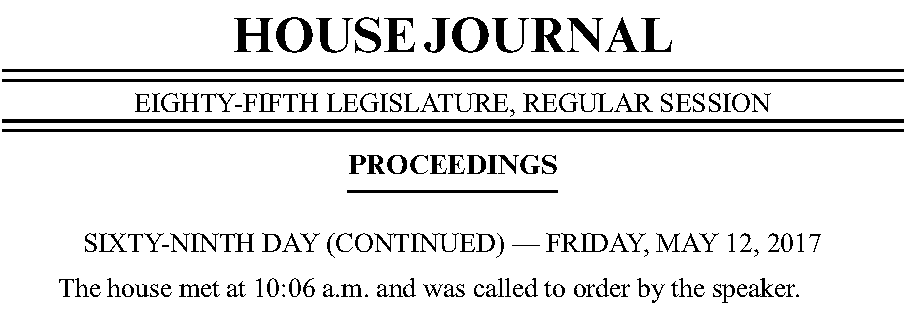



May 17
Please note that this post addresses amendments offered during committee or floor consideration.
What is an amendment?
An amendment is a change to a bill or resolution that is proposed either during committee or floor consideration.
During committee consideration of a bill, amendments can be offered by a member of that committee, whereas any member can offer amendments to a bill during floor consideration.
When can bills and resolutions be amended?
A floor amendment can be offered during second reading or third reading consideration of a bill. During the second reading of a bill, each amendment must be approved by a majority of the members present and voting to be adopted. However, a vote of two-thirds of the members present is required to adopt an amendment during the third reading of a bill.
Like floor amendments, a committee amendment must also be approved by majority vote of the chamber in which the bill is pending. A committee amendment is laid out and subject to debate on the chamber floor during the second reading consideration of the bill.
Where can I find information about amendments?
For amendments to current or recent legislation, use the Amendment Search on the Texas Legislature Online (TLO). This search tool allows you to use the following parameters to narrow your search results:
 |
|
The "Amendment Search" engine on TLO is located under the "Search" tab.
|
The ability to search for text within an amendment is particularly useful to see if language from one bill has been added by an amendment to another bill.
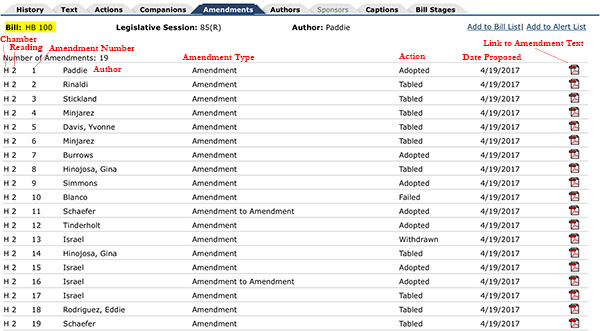 |
|
An explanation of the columns of information in the "Amendments" tab is provided above.
|
The "Amendments" tab in TLO contains more information about amendments, including the author of the amendment, amendment type, action, date the amendment was proposed, and link(s) to the amendment text.
The Current Amendment feature on TLO displays the text of amendments as they are considered on the House floor.
If you are conducting historical research about a bill, use the Legislative Archive System database and the collection of scanned House and Senate Journals to look for amendment-related information. Bill files, which can be found under the "Text" tab, contain adopted amendments, while journals contain all proposed amendments.
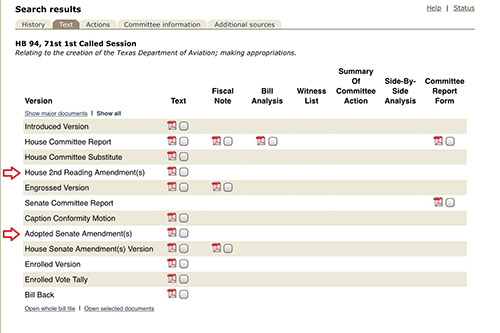 |
|
When using the Legislative Archive System, the bill file is located under the "Text" tab.
|
More information about amendments can be found in the following resources:
| House Bills (HB) & Joint Resolutions (HJR) | Senate Bills (SB) & Joint Resolutions (SJR) | |
| Filed | 4,444 | 2,356 |
| Reported out of committee | 1,915 | 1,003 |
| Passed by chamber of origin | 1,017 | 846 |
| Referred to committee in opposite chamber | 842 | 757 |
| Reported out of committee in opposite chamber | 160 | 339 |
| Passed opposite chamber | 82 | 88 |
| Sent to the Governor (bills only) | 21 | 55 |
| Signed by the Governor (bills only) | 1 | 5 |
May 11
Check out and delivery of New & Noteworthy titles is available to legislative staff in Capitol and District offices. To arrange check out and delivery of any of these items, you can submit an online request through the New & Noteworthy page on our website, contact the library at 512-463-1252, or use our PDF request form.

1. The Framers' Coup: The Making of the United States Constitution
By Michael J. Klarman
Presents a comprehensive accounting of the founding of the U.S. Constitution from the precursor Articles of Confederation to the enactment of the Bill of Rights. Suggests the framers were practicing ordinary interest group politics and reviews primary sources to show their reasoning, prejudices, and moral blind spots. Concludes the Constitution was a coup for expanded powers of the federal government and a significant departure from the more democratic state constitutions of the time.
Oxford University Press, 2016. 865 pages.
342.7302 K665F 2016

2. From the War on Poverty to the War on Crime: The Making of Mass Incarceration in America
By Elizabeth Hinton
Argues that America's mass incarceration rates originate not with the Reagan administration's War on Drugs, as popularly perceived, but with the Johnson administration's Great Society social welfare programs. Traces the trajectory of Johnson's War on Poverty and War on Crime policies, illustrating how Nixon and later presidents pulled away from welfare efforts and devoted increasing resources to anticrime programs that ultimately criminalized poverty. Demonstrates how flawed statistical data overstated the problem of crime in African American communities and produced a distorted view of American crime as a whole.
Harvard University Press, 2016. 449 pages.
364.973 H596F 2016

3. We Wanted Workers: Unraveling the Immigration Narrative
By George J. Borjas
Analyzes the impact that immigration has on the United States economy. Questions whether the analytical models used by both proponents and detractors of unrestricted immigration policies are flawed based on their assumptions and data. Concludes that many of the arguments for and against certain immigration policies, supported by statistical evidence, have been corrupted to support a particular stance on immigration.
W. W. Norton & Company, 2016. 238 pages.
331.10973 B644W 2016

4. Moderates: The Vital Center of American Politics, from the Founding to Today
By David S. Brown
Charts the progress of centrism in American politics, emphasizing the critical role that moderate politicians, ideas, and collaborations have played since the United States was established. Examines the contributions of pragmatic, centrist leaders within their historical contexts, including John Adams, Abraham Lincoln, Theodore Roosevelt, the Bushes, and Bill Clinton.
University of North Carolina Press, 2016. 335 pages.
306.20973 B812M 2016

5. Hillbilly Elegy: A Memoir of a Family and Culture in Crisis
By J.D. Vance
Examines the family, economic, and social challenges of America's poor, white working class in Kentucky's Appalachian region and small-town Ohio. Addresses policy issues of child abuse, alcoholism, poverty, welfare, and family trauma through a gripping and poignant memoir.
Harper, 2016. 264 pages.
305.5 V277H 2016

6. Shaming the Constitution: The Detrimental Results of Sexual Violent Predator Legislation
By Michael L. Perlin and Heather Ellis Cucolo
Presents a comprehensive overview of sex offenders and current sexual predator legislation in America. Analyzes in depth not only the laws, but also the social attitudes that have effectively blocked many constitutional protections that these offenders should have available to them. Argues public policy often has been the result of knee-jerk legislation and posits that as a result, society has neglected issues that matter - risk prediction, effective treatment, and curbing media misrepresentation.
Temple University Press, 2017. 309 pages.
345.73 P421S 2017
| House Bills (HB) & Joint Resolutions (HJR) | Senate Bills (SB) & Joint Resolutions (SJR) | |
| Filed | 4,443 | 2,351 |
| Reported out of committee | 1,885 | 967 |
| Passed by chamber of origin | 769 | 747 |
| Referred to committee in opposite chamber | 355 | 446 |
| Reported out of committee in opposite chamber | 42 | 144 |
| Passed opposite chamber | 13 | 38 |
| Sent to the Governor | 1 | 7 |
| Signed by the Governor | 1 | 3 |

May 4
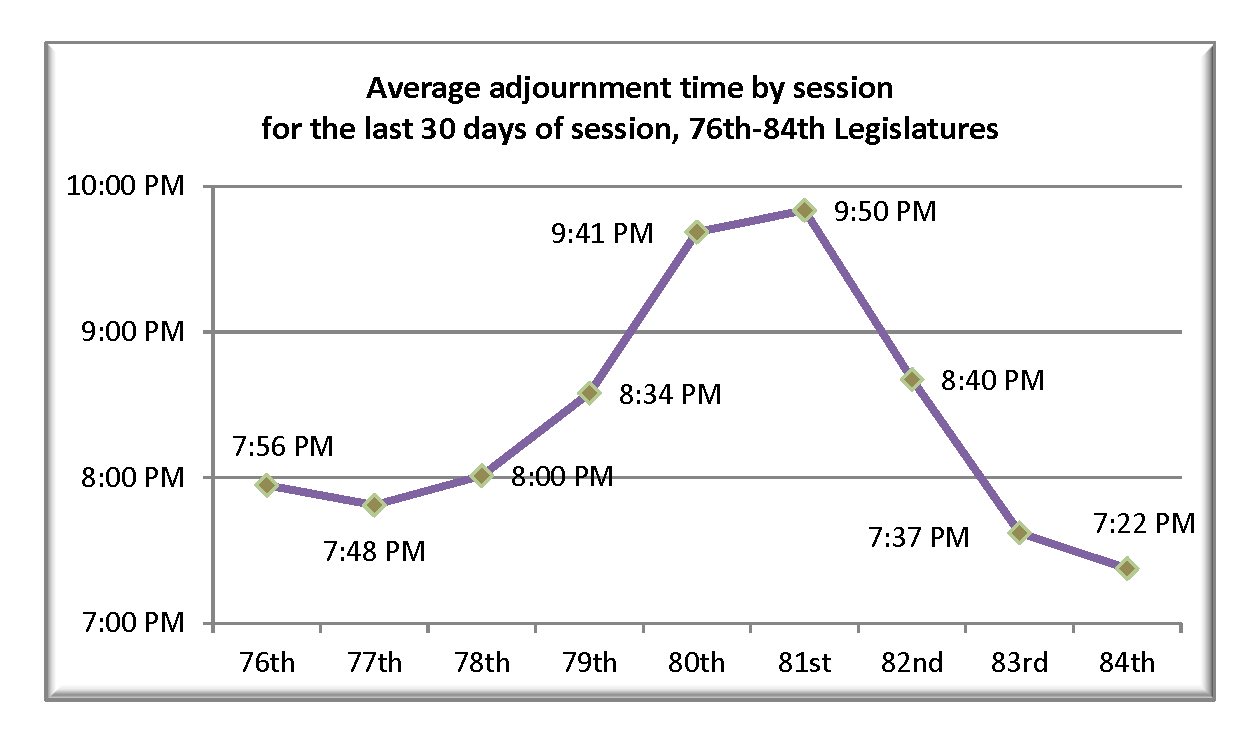
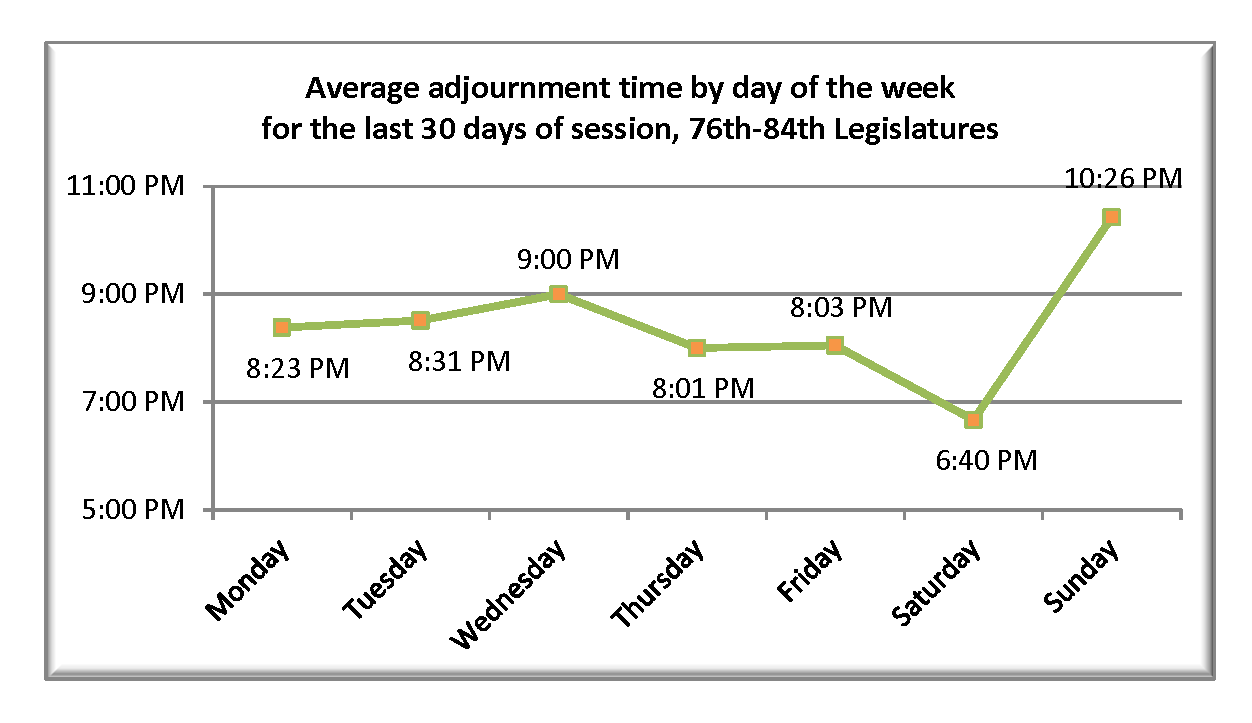

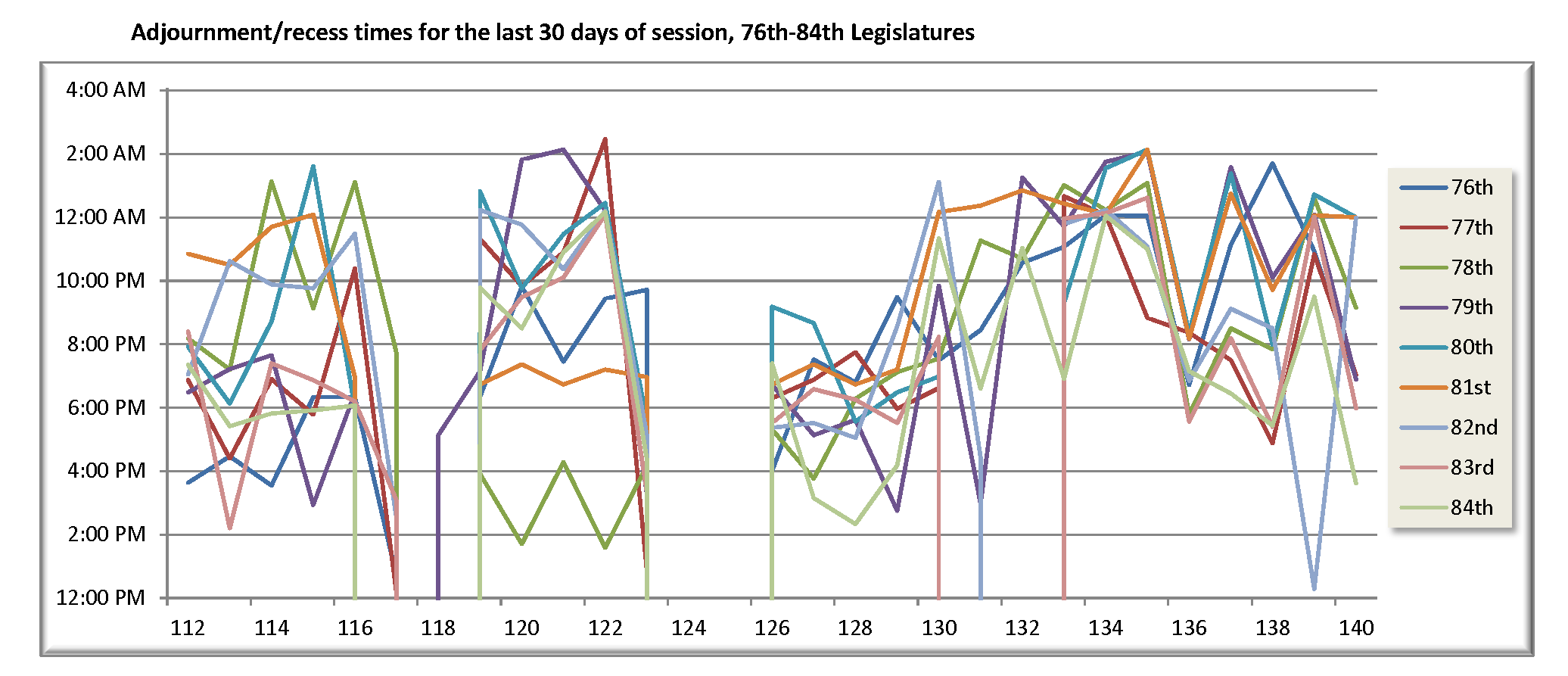
As the 85th Legislature draws to a close, a series of end-of-session deadlines begin to take effect. Below is a list of deadlines that occur next week:
Bill statistics for the period of Nov. 14, 2016 - April 30, 2017 are below.
| House Bills (HB) & Joint Resolutions (HJR) | Senate Bills (SB) & Joint Resolutions (SJR) | |
| Filed | 4,441 | 2,346 |
| Reported out of committee | 1,535 | 824 |
| Passed by chamber of origin | 381 | 581 |
| Referred to committee in opposite chamber | 76 | 132 |
| Reported out of committee in opposite chamber | 1 | 37 |
| Passed opposite chamber | 1 | 7 |
| Signed by the Governor | 0 | 0 |